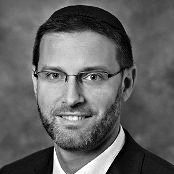 Photo from PxHere.
Photo from PxHere. Huddled over the hospital bed, the high-school students worked at placing a breathing tube down the throat of an elderly “patient” whose vital signs were crashing. The choices were stark and unfolding in real time: How would they revive this dying patient? Was there an ethical obligation to resuscitate someone on the brink of death without knowing the individual’s wishes?
It’s one thing to have this discussion in the abstract. It’s a far more complex experience when the crisis is literally playing out in your hands. And that is the point of the class I developed at Cedars-Sinai Medical Center for high-school students to wrestle with practical Jewish medical ethics.
Every week, students from YULA Girls, YULA Boys and Shalhevet high schools meet in the Women’s Guild Simulation Center for Advanced Clinical Skills. There, they work in simulated operating rooms on lifelike mannequins with the capability to “breathe” and “bleed.”
Informed by ancient Jewish wisdom and contemporary science, I guide the students as they grapple with the ethical ramifications of organ donation, artificial nutrition, when — or if — to resuscitate dying patients, and more. Through this process of discovery and discussion, the students begin to develop a great appreciation for the nuances involved in decisions of life and death.
I often start the semester with the hypothetical case of the elderly patient who is rushed to the emergency room in critical condition after collapsing at home. The students must decide whether to place the patient on a respirator to keep her alive or to withhold this intervention, allowing death. Keeping the patient on the respirator, they learn, might prolong a life of agony and pain.
What should they do? I ask. What do they think Judaism requires them to do?
To explore these questions, we turn to the Shulchan Aruch, the code of Jewish law developed in the 16th century and the story of the woodchopper working outside the room of a dying individual. The story relates that the chop-chop-chop rhythm of the work prevents the dying person’s soul from leaving. Is it permissible, then, for the woodchopper to cease his work and thus risk ending the dying person’s life? The Shulchan Aruch rules that the woodchopper may stop, explaining that doing so indirectly allows — but does not cause — the soul to leave.
Not surprisingly, the story provokes questions. “Does this rationale apply to contemporary technology, which has the ability to directly save or end life”? one student asks. “If we have a way to save a life, why wouldn’t we?” a second asks. A third worries about acting rashly: “Shouldn’t we step back and see if there is a compromise approach?”
“It’s one thing to have this discussion in the abstract. It’s a far more complex experience when the crisis is literally playing out in your hands.”
My students have a real thirst for this type of discussion. They want to know how our tradition wrestles with the choices we confront every day, including, for example, the risks involved with organ donation.
For this subject, I introduce the responsa of Rabbi David ben Zimra, the Radbaz, a 16th-century Jewish scholar in Spain. The Radbaz tells of a thief who is caught stealing and faces the punishment of having his hand cut off. When the thief escapes, the authorities threaten to kill an innocent Jew if he fails to return to face justice.
Is the thief required to come back and risk his life to save that of an innocent person?
We apply this story to questions around organ donation. Here again, the students are divided in their opinions of how much risk any individual should be required to assume to help another. They ask: If saving one life means sacrificing another, what are the obligations involved? What if the cost involves sacrificing not a life but an organ and a lifetime of normal bodily functions?
It often takes time for students to realize that there are no simple answers to complex ethical questions, whether religious or medical. Still, they learn to appreciate the direct line between classical Jewish teachings and contemporary medical conundrums.
With that understanding, my students develop an ability to engage with texts and argue their positions with authority and passion, the same way their ancestors have done for centuries. In the process, they learn that they can make informed decisions about some of the most complex and difficult issues they may ever face.
Rabbi Jason Weiner is senior rabbi and director of the Spiritual Care Department at Cedars-Sinai Medical Center.






















 More news and opinions than at a Shabbat dinner, right in your inbox.
More news and opinions than at a Shabbat dinner, right in your inbox.